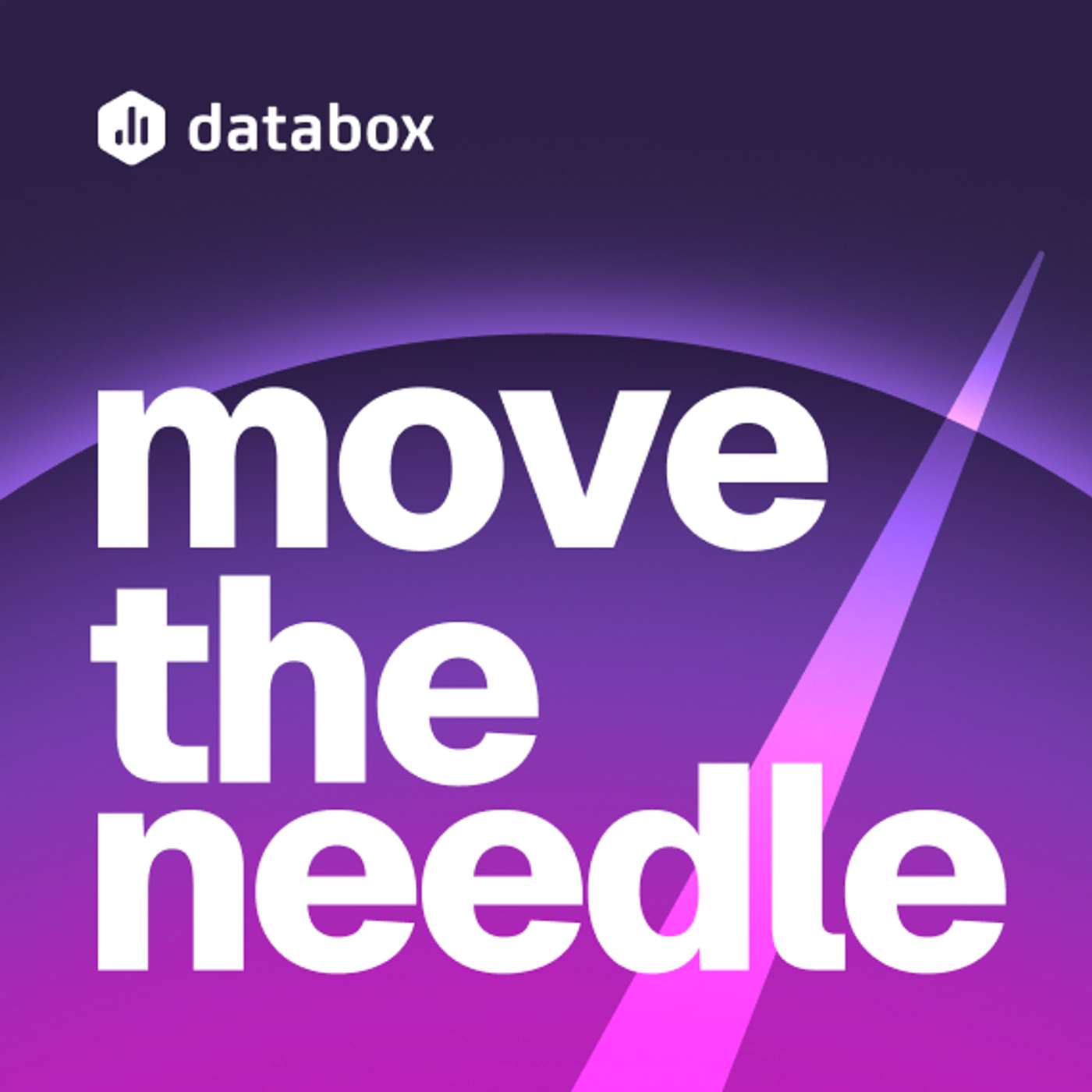

Move The Needle - Real strategies. Data-driven growth. B2B results that move the needle.
Databox
This podcast will help you grow your B2B company quarter after quarter—with confidence, clarity, and data-backed decisions.
In each episode, you’ll learn proven strategies, practical frameworks, and first-hand insights from GTM leaders, RevOps pros, and seasoned B2B executives. They’ll walk you through how they use data to set smart targets, forecast accurately, overcome growth plateaus, and build high-performing sales and marketing engines.
You’ll hear stories of real challenges, real results, and the data-driven moves that made all the difference.
The best B2B companies don’t just look at metrics—they use them to take action. Move The Needle will help you do the same.
In each episode, you’ll learn proven strategies, practical frameworks, and first-hand insights from GTM leaders, RevOps pros, and seasoned B2B executives. They’ll walk you through how they use data to set smart targets, forecast accurately, overcome growth plateaus, and build high-performing sales and marketing engines.
You’ll hear stories of real challenges, real results, and the data-driven moves that made all the difference.
The best B2B companies don’t just look at metrics—they use them to take action. Move The Needle will help you do the same.
Episodes
Mentioned books

Mar 15, 2023 • 50min
132: Optimizing Your Existing Funnel (w/ Adam Goyette, Curdis)
Databox is an easy-to-use Analytics Platform for growing businesses. We make it easy to centralize and view your entire company's marketing, sales, revenue, and product data in one place, so you always know how you're performing. Learn More About DataboxSubscribe to our newsletter for episode summaries, benchmark data, and moreAdam Goyette (Founder, Curdis) shares the framework he uses and recommends to identify growth and optimization opportunities from your existing marketing and sales funnel.

Mar 8, 2023 • 55min
131: Understanding How To Grow (w/ Frank Rocchio, Lone Fir Creative)
Databox is an easy-to-use Analytics Platform for growing businesses. We make it easy to centralize and view your entire company's marketing, sales, revenue, and product data in one place, so you always know how you're performing. Learn More About DataboxSubscribe to our newsletter for episode summaries, benchmark data, and moreLearn how Frank Rocchio implemented a new framework to help the team at Lone Fir Creative better understand how to troubleshoot and hit their growth goals.

Mar 1, 2023 • 1h 11min
BTB: How Do You Build A Top Performing Agency? (w/ Bob Ruffolo, IMPACT)
Databox is an easy-to-use Analytics Platform for growing businesses. We make it easy to centralize and view your entire company's marketing, sales, revenue, and product data in one place, so you always know how you're performing. Learn More About DataboxSubscribe to our newsletter for episode summaries, benchmark data, and moreLearn how Bob Ruffalo was able to grow IMPACT, a coaching and training company that helps businesses improve their sales, marketing, communication, and leadership, into a $12m firm that's in the top 93rd-100th percentile of his agency peers.

Feb 22, 2023 • 1h 2min
130: Tactical Ideas to Drive Growth (w/ Ryan O'Hara, Request For Meeting)
Learn how Ryan O'Hara uses data to validate product ideas, and double down on the marketing channels there are already working.

Feb 15, 2023 • 42min
129: Hit Your Best Quarter Ever By Adding Leading Activities (w/ Brandon Powell, HatchWorks)
Databox is an easy-to-use Analytics Platform for growing businesses. We make it easy to centralize and view your entire company's marketing, sales, revenue, and product data in one place, so you always know how you're performing. Learn More About DataboxSubscribe to our newsletter for episode summaries, benchmark data, and moreDo you have trouble setting goals at your company? Or that you don't have any real control over hitting them? Learn how Brandon Powell (CEO of HatchWorks) implemented a new goal-setting process to lead his team to their best quarter ever.

Feb 8, 2023 • 1h 17min
128: Using KPIs to Drive Holistic Growth (w/ Benyamin Elias, Podia)
Benyamin Elias, VP of Marketing at Podia, shares how to have a well-informed marketing gut and how to use KPIs to inform the growth of your business.

Feb 1, 2023 • 49min
127: The State of Business Reporting (w/ Pete Caputa, Databox)
Databox is an easy-to-use Analytics Platform for growing businesses. We make it easy to centralize and view your entire company's marketing, sales, revenue, and product data in one place, so you always know how you're performing. Learn More About DataboxSubscribe to our newsletter for episode summaries, benchmark data, and moreRead the full report (here)Pete's LinkedIn PostsMost companies are still cutting and pasting into spreadsheets/slidesPicking metrics is hard. Few do it correctly.Marketing is the most measured activity. Is that a good thing? Sharing company performance transparently is not the standard, but it probably should be.Seven habits the highest performing companies implemented.

Jan 25, 2023 • 44min
126: Starting And Growing a Community (w/ Mike Rizzo, MarketingOps.com)
Get insights from Community-Led Founder Mike Rizzo, on how to start and grow a successful community that drives meaningful growth to your business.

Jan 18, 2023 • 34min
125: Using "Process KPIs" to Hit Goals (Hillary Carpio, Snowflake)
Learn how Hillary Carpio (Sr. Dir. of ABM at Snowflake) uses “Process KPIs” to ensure her team can create sustainable, repeatable processes that help them hit their goals.

Jan 11, 2023 • 1h 9min
124: Doubling Email Subscribers (w/ Camille Trent)
Learn how Camille Trent used LinkedIn to double email subscribers from 6k to 12k in just 1 month.


